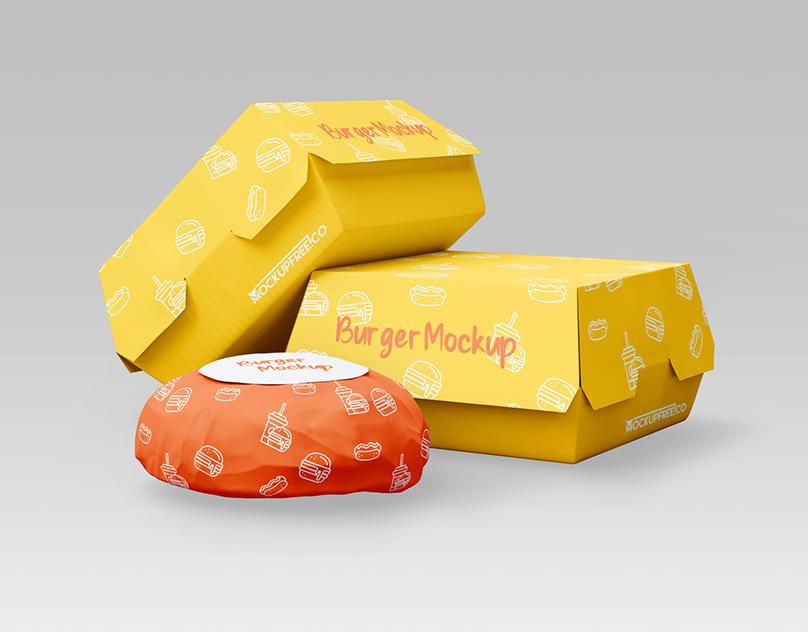The home-delivered burger is a modern paradox. We anticipate a restaurant-quality experience. Yet we often receive a soggy, lukewarm shadow of its former self. This consistent failure points to a critical flaw in the delivery chain. The solution emerging is not a better recipe or a faster driver. Instead, it is a fundamental rethinking of the container itself. A new model known as Packaging as a Service is poised to transform the entire system.
The Inevitable Sog: Why Traditional Packaging Fails
The journey from kitchen to doorstep is a hostile environment for a burger. The primary enemy is steam. As a hot burger is sealed inside a box, moisture has no escape. This moisture then condenses on the inside of the container and the coldest surface available. That surface is often the bun. The result is a damp, disintegrating bread product that ruins the eating experience. Furthermore, traditional cardboard containers lack sophisticated engineering. They allow heat to dissipate quickly, leading to a cold core. They also often compress the burger under their own weight.
This smashes the ingredients together, creating a homogenous and unappealing texture. The standard one-size-fits-all approach also fails to account for different burger architectures. A tall, gourmet burger suffers immensely in a box designed for a flatter, simpler patty. These failures are not the fault of the restaurant or the delivery driver. They are a direct result of an inadequate and static packaging system that has seen little innovation for decades.
Beyond the Box: Understanding the Service Model
Packaging as a Service, or PaaS, moves beyond a simple transaction. Restaurants no longer just buy boxes. Instead, they subscribe to a holistic service provided by a packaging specialist. This model provides several distinct layers of value. First, companies supply scientifically designed, high-performance containers. These are often tailored to specific menu items. Second, the service includes the logistics of providing the right packaging at the right time.
This ensures the restaurant never runs out. Third, and most importantly, the service model incorporates ongoing research and development. As new food trends emerge, the packaging solutions evolve in tandem. This creates a dynamic partnership. The packaging company has a vested interest in the restaurant's success. A better-delivered burger leads to higher customer satisfaction and repeat orders. This benefits both the restaurant and the packaging provider. The entire relationship shifts from a cost-centric purchase to a value-driven collaboration focused on a shared goal: delivering perfection.
Engineering the Perfect Bite: Science in Sustainable Materials
The core of this new model lies in material science and smart design. Modern packaging solutions use a multi-material approach to combat specific problems. For instance, specialized vents can be strategically placed to allow excess steam to escape without letting the heat out. This prevents sogginess while maintaining temperature. Similarly, integrated frills or trays made from molded fiber can cradle the bottom bun. They absorb excess grease from the patty and sauces, protecting the structural integrity of the bread.
Some advanced designs even feature separate compartments for wet ingredients like tomatoes and pickles. These compartments can be opened by the customer just before eating. This ensures a crisp texture. The materials themselves are increasingly sustainable. Innovations include compostable polymers, plant-based coatings, and paperboard from managed forests. The entire lifecycle of the package is considered, from production to disposal. Therefore, the environmental impact is significantly reduced without compromising performance.
The Economic Appetite: Cost Benefits for Restaurants
Adopting a Packaging as a Service model presents a compelling financial argument for restaurant owners. Initially, the subscription fee may seem like an added cost. However, the long-term savings and value become clear upon closer examination.
- Reduced Waste: Traditional packaging is often bought in bulk, leading to storage issues and money tied up in inventory. The PaaS model typically operates on a just-in-time delivery system, minimizing storage needs and reducing waste from obsolete packaging.
- Operational Efficiency: A streamlined, reliable packaging supply chain saves staff time. They no longer need to manage complex orders from multiple suppliers or worry about running out of crucial boxes during a busy weekend.
- Enhanced Brand Value: Superior packaging protects the quality of the food, which directly leads to better customer reviews and fewer refunds. A happy customer is a returning customer, driving higher lifetime value and boosting the restaurant's reputation.
Consequently, the investment transforms from a simple line item into a strategic tool for growth and customer retention.
Branding Reimagined: The Unboxing Experience
In the age of social media, the delivery experience extends beyond consumption. The moment a customer opens their order is a powerful touchpoint. Traditional, grease-stained cardboard does little to enhance brand perception. Innovative burger packaging, however, turns this moment into a marketing opportunity. A clean, well-structured box that opens smoothly to reveal a pristine burger creates a strong positive impression.
It signals care, quality, and attention to detail. This physical interaction can be designed with brand-specific colors, subtle logos, and even engaging messages printed on the inside of the lid. The satisfying process of opening a thoughtfully designed container builds anticipation and elevates the entire meal. This "unboxing" effect can generate organic social media content when customers share their perfect-looking delivered burgers online. Essentially, the package becomes a silent brand ambassador at the customer's home.
A Greener Promise: The Sustainability Angle
The environmental burden of single-use food containers is a major concern for consumers and businesses alike. The traditional model often relies on plastic-lined cardboard or expanded polystyrene foam, which are difficult to recycle and can persist in landfills for centuries. The Packaging as a Service model directly addresses this issue. Because service providers are specialists, they invest heavily in developing next-generation sustainable materials.
They have the scale and expertise to source and supply compostable and biodegradable options that might be inaccessible to individual restaurants. Furthermore, the service model can incorporate a circular economy approach. Some providers may offer a take-back program for their compostable containers, ensuring they are processed correctly. This closed-loop system significantly reduces waste and aligns with the growing consumer demand for eco-friendly practices. Adopting such a system allows a burger brand to build a powerful sustainability story.
Operational Flow: Integrating PaaS into the Kitchen
For a busy restaurant kitchen, speed and consistency are everything. Integrating any new system must not disrupt the delicate dance of the dinner rush. Fortunately, the PaaS model is designed for seamless integration. The packaging is often designed for intuitive assembly, requiring minimal staff training. The containers might feature simple, secure locking mechanisms that replace cumbersome flaps and glue.
This speeds up the packing process, getting orders out the door faster. Moreover, the reliable, on-demand supply ensures that the correct packaging is always available. The kitchen staff will not need to improvise with ill-fitting boxes, which compromises food quality. The subscription service manages the inventory remotely. This eliminates a major logistical headache for the restaurant manager. The entire workflow becomes more efficient, allowing the team to focus on food preparation rather than packaging problems.
The Future is Servitized: What’s Next for Food Delivery
The application of Packaging as a Service is likely just the beginning. This servitization model, where you pay for an outcome rather than a product, could expand to other challenging delivery foods. Imagine crisp fries delivered in aerated, temperature-regulating sleeves or salads that remain chilled and fresh. The underlying principle can be applied universally. The success of burger delivery through PaaS will pave the way for broader adoption.
We may see the rise of comprehensive "Delivery Assurance as a Service" companies. These firms would provide not just smart packaging, but also integrated temperature and humidity sensors. These sensors could provide real-time data to the restaurant and the customer. This would create unprecedented transparency in the delivery process. The entire industry is on the cusp of a revolution, moving from generic solutions to tailored, technology-driven services that guarantee quality.
Conclusion: A Model for Guaranteed Quality
The persistent problem of the poor delivered burger has finally met its match. Packaging as a Service is not a minor upgrade. It is a fundamental shift in philosophy. It redefines packaging from a passive container to an active, integral component of the food itself. This model offers a powerful trifecta of benefits.
It ensures a superior customer experience, creates economic sense for restaurants, and provides a viable path toward environmental responsibility. As this disruptive model gains traction, the disappointment of a soggy bun will become a relic of the past. The future of food delivery is not just about speed, but about guaranteed quality from the kitchen to the customer's hands.
Click Here: https://ibexpackaging.com/burger-boxes/



